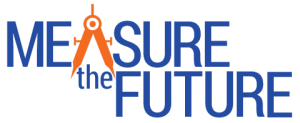February 5th, 2015 Brian Herzog
 I saw a post on LISNews today about a new Measure the Future initiative to build hardware sensors to better track how people use libraries. They say,
I saw a post on LISNews today about a new Measure the Future initiative to build hardware sensors to better track how people use libraries. They say,
Imagine having a Google-Analytics-style dashboard for your library building: number of visits, what patrons browsed, what parts of the library were busy during which parts of the day, and more. Measure the Future is going to make that happen by using simple and inexpensive sensors that can collect data about building usage that is now invisible. Making these invisible occurrences explicit will allow librarians to make strategic decisions that create more efficient and effective experiences for their patrons.
On the one hand, I love this idea, because actual data can reveal amazing things. However at the same time, the idea of sensors all over the building tracking patrons sets off my privacy alarms. I'm sure it'll all be anonymous data, but Big Brother (even when it's Big Library) will still be in the back of my mind.
I didn't see too much technical detail on what the sensors will look like or how they will be integrated in libraries. But I think this is a great idea, and am looking forward to seeing their progress.
Tags: activity, building, data, libraries, Library, measure the future, patron, public, sensors, Technology, track, tracking, usage
Posted under Uncategorized | 1 Comment »
March 15th, 2012 Brian Herzog
NewsBank has been conducting a study with 100+ libraries of various sizes, to look closely at how library databases are used. Here are my notes on the presentation, and the short discussion afterward.
- As daily newspaper shrink (in page count), archiving shrinks as well (many newspapers are posting more to their websites than they put in print, and they are not archiving that content)
- The trend of investment is going to "first-to-web" systems model, mobile and social network integration, and paywalls and metering systems
- Library databases appear to be ~80% remote usage
- Majority of use is for older content, not current news - 80% of articles accessed are more than 90 days old. Of that 80%:
- 18% = 1-4 years old
- 32% = 5-9 years old
- 50% = >10 years old
- Majority of searches are for local news: people names and local topics (political issues, crime, businesses, development of schools, etc)
As a bonus, the local NewsBank rep explained how to properly order a Philly cheesesteak:
- Specify the quantity you want
- Specify your cheese:
- Wiz = cheese wiz
- American = American cheese
- provi = provolone
- Specify fried onions or no:
- Wid = with onions
- Widout = without onions
So, an order for one cheesesteak with cheese wiz and onions would be:
One - wiz - wid
Posted under Uncategorized | 1 Comment »
September 22nd, 2011 Brian Herzog
 Since getting back to work this week, I've been trying to get caught up on emails and feeds.
Since getting back to work this week, I've been trying to get caught up on emails and feeds.
Stephen's Lighthouse linked to the top 25 most downloaded titles on Overdrive - which reminded me that I had recently done our year-end database usage stats, and compiled highest-access titles for our Safari Computer Ebooks database.
Our top 12 most-accessed books were:
| Title, Author |
Accessed |
| Sams Teach Yourself Java in 24 Hours, Fifth Edition, by Rogers Cadenhead |
706 |
| CISSP Exam Cram, Second Edition, by Michael Gregg |
684 |
| CISSP Study Guide, by Eric Conrad, Seth Misenar, Joshua Feldman |
677 |
| The Green Screen Handbook, by Jeff Foster |
577 |
| Java: A Beginner's Tutorial, by Budi Kurniawan |
462 |
| Adobe InDesign CS5 On Demand, by Steve Johnson - Perspection, Inc. |
358 |
| SAP MM HANDBOOK, by Kogent Learning Solutions, Inc. |
356 |
| Microsoft Excel 2010 Step by Step, by Curtis D. Frye |
340 |
| Sams Teach Yourself Android Application Development in 24 Hours, by Lauren Darcey, Shane Conder |
305 |
| Beginning iPhone and iPad Web Apps: Scripting with HTML5, CSS3, and JavaScript, by Chris Apers, Daniel Paterson |
278 |
| Ruby on Rails 3 Tutorial: Learn Rails by Example, by Michael Hartl |
270 |
| IT Systems Management, Second Edition, by Rich Schiesser |
220 |
The Safari stats interface doesn't make it really easy to identify this. Finding the number of sessions isn't too bad*, but we have to report the total number of "circulations" for these ebooks - which to me means the number of times each one was accessed.
I was able to run one report that seemed like a master total usage report, which I think indicated that 433 of our ebooks have been "hit" a total of 12,256 times.
Also interesting, if I'm reading these reports right, those 433 books are only about 1/8 of the collection, meaning 7/8 never got touched even once. Also, of those 433, 250 were accessed five or fewer times (totaling 410 circs), and the top twelve books (which all had >200 "hits") have a combined total of 5233 circs. Which means that 12 books account for a little under half of our total activity.
That is shocking, but also should be a fairly good indicator of what the leading technologies are right now (at least for my patrons, and among the selections available in our Safari catalog) - and a good reason to supplement our Safari access with print copies.
*Incidentally, we had 963 patron user sessions for FY11
Tags: Books, computer, ebook, ebooks, libraries, Library, online, popular, public, safari, stats, usage
Posted under Uncategorized | 4 Comments »
 I saw a post on LISNews today about a new Measure the Future initiative to build hardware sensors to better track how people use libraries. They say,
I saw a post on LISNews today about a new Measure the Future initiative to build hardware sensors to better track how people use libraries. They say, Since getting back to work this week, I've been trying to get caught up on emails and feeds.
Since getting back to work this week, I've been trying to get caught up on emails and feeds.